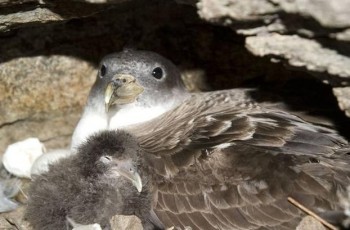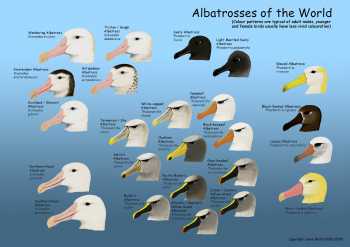Graham Martin (School of Biosciences, University of Birmingham, UK) and Rory Crawford (RSPB) have published an open-access review in the journal Global Ecology and Conservation on reducing bycatch of seabirds (including procellariiform species such as shearwaters) and other marine taxa in gill nets. “[F]or gillnet bycatch to be reduced, the actual nets need to be made more visible to non-target vertebrates.”
The paper’s abstract follows:
“Sensory capacities and perceptual challenges faced by gillnet bycatch taxa result from fundamental physiological limits on vision and constraints arising within underwater environments. To reduce bycatch in birds, sea turtles, pinnipeds and blue-water fishes, individuals must be alerted to the presence of nets using visual cues. Cetaceans will benefit but they also require warning with cues detected through echolocation. Characteristics of a visual warning stimulus must accommodate the restricted visual capacities of bycatch species and the need to maintain vision in a dark adapted state when foraging. These requirements can be provided by a single type of visual warning stimulus: panels containing a pattern of low spatial frequency and high internal contrast. These are likely to be detectable across a range of underwater light environments by all bycatch prone taxa, but are unlikely to reduce the catch of target fish species. Such panels should also be readily detectable by cetaceans using echolocation. Use of sound signals to warn about the presence of gillnets is not recommended because of the poor sound localisation abilities of bycatch taxa, cetaceans excepted. These warning panels should be effective as a mitigation measure for all bycatch species, relatively easy to deploy and of low cost.”

Shearwaters: at risk to drowning in gill nets, Photograph by Vero Cortes
Reference:
Martin, G.R. & Crawford, R, 2015. Reducing bycatch in gillnets: A sensory ecology perspective. Global Ecology and Conservation 3: 28-50.
John Cooper, ACAP Information Officer, 13 December 2014

 English
English  Français
Français  Español
Español 


